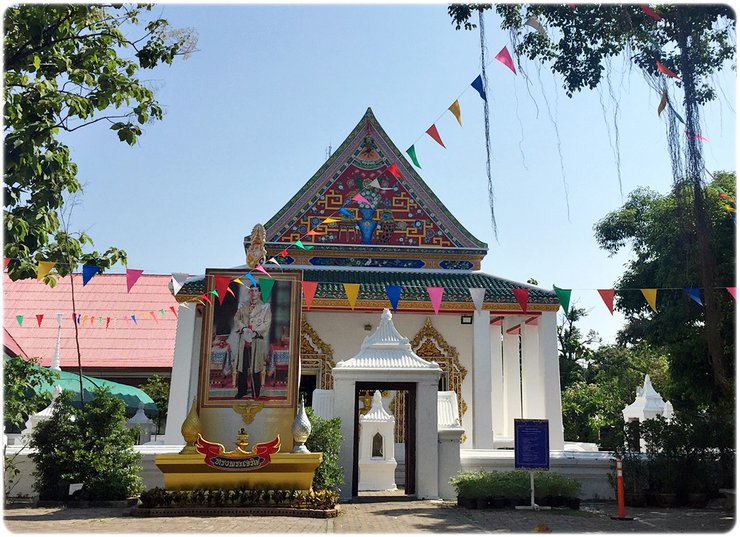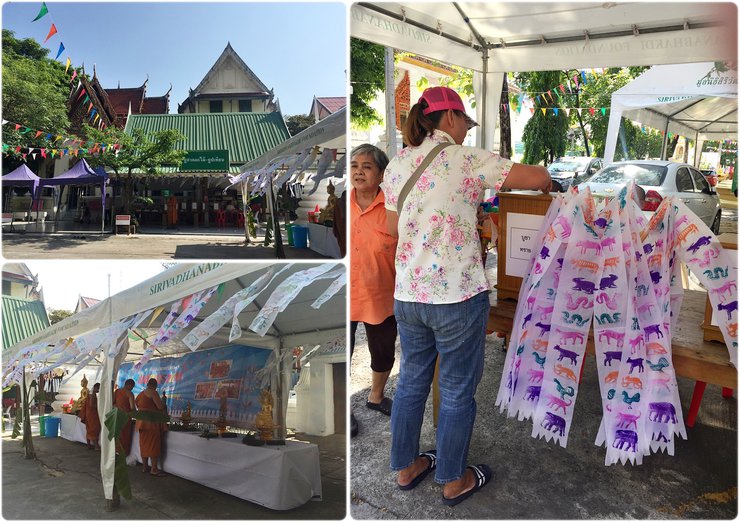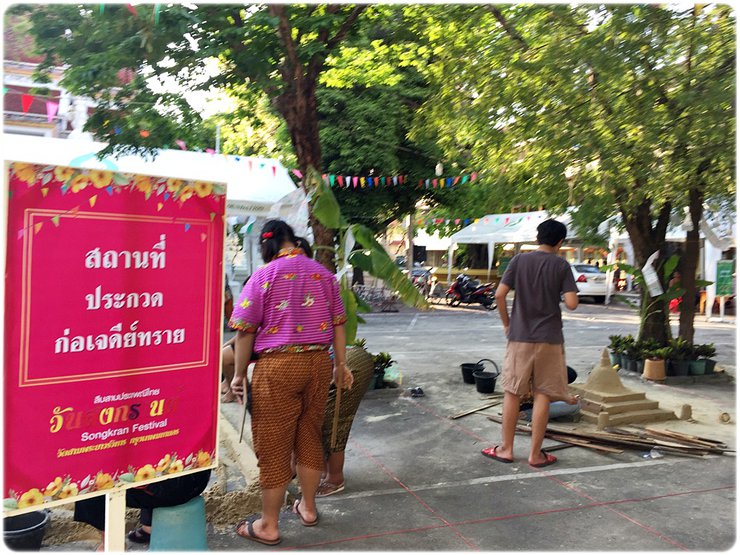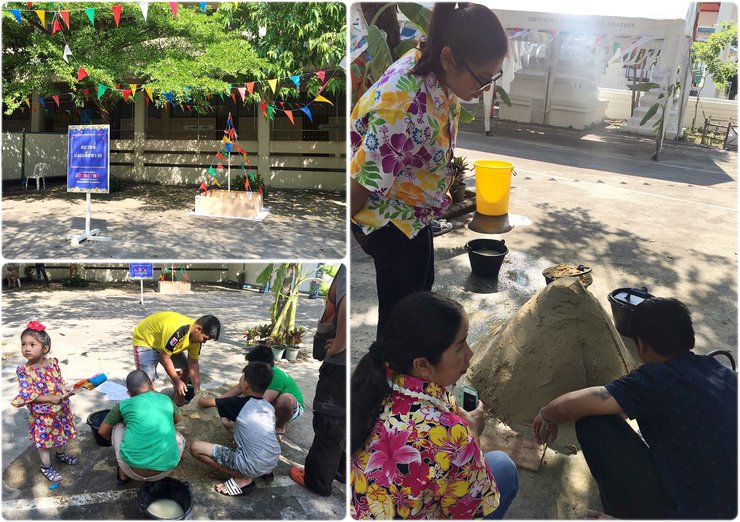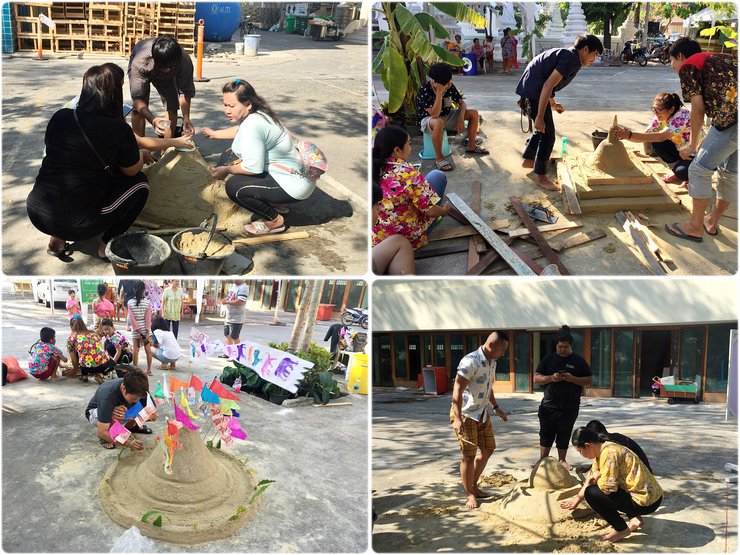
Wat Sam Phraya Yai Warawihan
Every April 13th marks Songkran, the Thai New Year. During this festival, Buddhists typically visit temples to make merit and participate in activities to welcome the new year.

At the renowned Wat Sam Phraya, the Songkran festival has been celebrated for many years. This year, however, marks a special occasion with the introduction of a sand pagoda building competition to foster unity and merriment. The sand pagodas will be constructed on the 12th, and the results will be announced on the 13th during the merit-making ceremony for the monks.

Building Sand Pagodas

The tradition of building sand pagodas is directly related to Buddhism. Thai people associate this tradition with the Buddhist belief in karma. Sand pagodas are built and offered to temples to return the sand that has been carried out of the temple on people's feet.

Each group gathered first to build a sand pagoda together.

To pay homage to the Buddha and gain merit. In addition to the tradition of paying homage to the Buddha, it was also a strategy used by people in the past to bring people in the community together to organize joyful events and build unity within the community.

Busy decorating.


The results of the competition will be announced the day after the merit-making ceremony.

Daily Bathing Ceremony for the Buddha's Birthday




The merit-making activities officially commenced on April 13th with the invitation of monks for a midday meal offering. Each household prepared savory and sweet dishes to be collectively offered to the monks.

Monk giving blessings

Offering food to monks in the afternoon

Simple dishes prepared by each household were offered to the monks.

Children dressed in modern Thai attire and elders participated in merit-making activities.

Let's take a look at the sand pagoda after it was built. What kind of wind did it encounter?

Exquisitely beautiful



After the midday meal offering to the monks, the abbot announced awards for all teams that participated in the sand pagoda competition. He then proceeded to pay respects to the sacred Buddha statue at Wat Sam Phraya.

The revered Luang Pho Phra Phutthakesorn is enshrined within the Ubosot.
The revered Luang Pho Phra Phutthakhesorn Buddha statue has resided within the sacred Ubosot of Wat Sam Phraya Worawihan since ancient times. Cast from a special metal alloy and adorned with gold leaf, the statue sits majestically upon a jeweled throne in the posture of Marawijai, signifying victory over Mara, the embodiment of evil. This posture symbolizes the Buddha's triumph over all negativity and darkness in the world, leading to their ultimate eradication.
It is widely believed that those who pay their respects and make offerings to Luang Pho Phra Phutthakhesara will experience prosperity and advancement in their careers, and will be loved by both humans and deities.

The Buddha enshrined in the vihara.

Ancient Buddha statues enshrined in the temple's viharn.

(Right) Luang Pho Phra Nang
The sacred Buddha statue in the Pali Lai Yai posture was created during the reign of King Rama V. This posture depicts the Buddha seated on a throne with both feet resting on the ground. His hands are placed on a begging bowl, which distinguishes it from other Buddha statues in the Pali Lai Yai posture. As a result, some villagers refer to it as "Luang Pho Uam Bat" (the Buddha carrying a bowl).
The origin of this Buddha image is related to an incident during the Buddha's time at the Kosambi monastery. A group of monks disagreed on matters of monastic discipline. Despite the Buddha's attempts to resolve the conflict, the monks remained divided. Seeking solitude, the Buddha retreated to the Rakkhita forest near the village of Parileyyaka. There, he was attended to by a monkey and an elephant, both named Parileyyaka.
The Pali Lailaik posture of the Buddha statue is the presiding Buddha for those born on Wednesday night. It represents abundance and is believed to bring wealth and prosperity to those who worship and pray to it.

Reclining Buddha
The Reclining Buddha, also known as Phra Non, is a sacred and significant Buddha statue in the posture of subduing the Asura King. It was built during the reign of King Rama V. This posture depicts the Buddha lying on his right side, with his feet placed one on top of the other. His left hand rests along his body, while his right hand supports his head, which is propped up on a pillow. His eyes are open and he has a slight smile, a posture commonly referred to as the "reclining posture."

After that, he returned to the community to participate in the annual ritual of pouring water on the heads of elders to seek their blessings.

Both children and adults had fun.


Group photo

Procession of Buddha Images at Tha Phra Chan
During Songkran, the popular area in Bangkok is none other than "Khao San Road." The stretch from Bang Lamphu Intersection to Khao San Road is closed to traffic, transforming it into a true pedestrian street for water play.


Foreign men join in the water play during the Songkran festival.

Joyful and Merry
This phrase evokes a sense of lightheartedness and celebration. It suggests a feeling of happiness and enjoyment, often associated with festivities and gatherings.

Crossplay is also included.

A lively and joyful atmosphere.

สายลม ที่ผ่านมา
Wednesday, February 26, 2025 4:07 PM



